![[how was the theory of evolution developed development history of evolutionary theory]](evolution.gif)
Charles Darwin Alfred Russle Wallace essay on population thomas henry huxley Malthus
theory of evolution developed development history of evolutionary theory![[how was the theory of evolution developed development history of evolutionary theory]](evolution.gif) Charles Darwin Alfred Russle Wallace essay on population thomas henry huxley Malthus |
| Home > Evolution Index > Theory of Evolution development History of Evolutionary Theory |
|
Theory of Evolution development
|
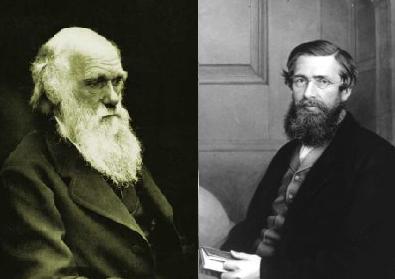 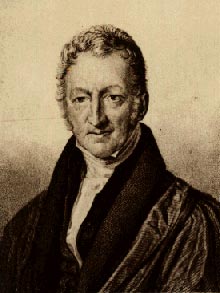
|
| Charles Darwin & Alfred Russel Wallace Thomas Malthus |
When on board H.M.S. 'Beagle,' as naturalist, I was much struck with certain facts in the distribution of the inhabitants of South America, and in the geological relations of the present to the past inhabitants of that continent. These facts seemed to me to throw some light on the origin of species - that mystery of mysteries, as it has been called by one of our greatest philosophers. On my return home, it occurred to me, in 1837, that something might perhaps be made out on this question by patiently accumulating and reflecting on all sorts of facts which could possibly have any bearing on it. After five years' work I allowed myself to speculate on the subject, and drew up some short notes; these I enlarged in 1844 into a sketch of the conclusions, which then seemed to me probable: from that period to the present day I have steadily pursued the same object. I hope that I may be excused for entering on these personal details, as I give them to show that I have not been hasty in coming to a decision.
My work is now nearly finished; but as it will take me two or three more years to complete it, and as my health is far from strong, I have been urged to publish this Abstract. I have more especially been induced to do this, as Mr. Wallace, who is now studying the natural history of the Malay archipelago, has arrived at almost exactly the same general conclusions that I have on the origin of species. Last year he sent to me a memoir on this subject, with a request that I would forward it to Sir Charles Lyell, who sent it to the Linnean Society, and it is published in the third volume of the journal of that Society. Sir C. Lyell and Dr Hooker, who both knew of my work - the latter having read my sketch of 1844 - honoured me by thinking it advisable to publish, with Mr Wallace's excellent memoir, some brief extracts from my manuscripts.
![]()
And I may, therefore, further suppose that the publication of the Darwin and Wallace papers in 1858, and still more that of the 'Origin' in 1859, had the effect upon them of the flash of light, which to a man who has lost himself in a dark night, suddenly reveals a road which, whether it takes him straight home or not, certainly goes his way. That which we were looking for, and could not find, was a hypothesis respecting the origin of known organic forms, which assumed the operation of no causes but such as could be proved to be actually at work. We wanted, not to pin our faith to that or any other speculation, but to get hold of clear and definite conceptions which could be brought face to face with facts and have their validity tested. The 'Origin' provided us with the working hypothesis we sought. Moreover, it did the immense service of freeing us for ever from the dilemma--refuse to accept the creation hypothesis, and what have you to propose that can be accepted by any cautious reasoner? In 1857, I had no answer ready, and I do not think that any one else had. A year later, we reproached ourselves with dullness for being perplexed by such an inquiry. My reflection, when I first made myself master of the central idea of the 'Origin,' was, "How extremely stupid not to have thought of that!" I suppose that Columbus' companions said much the same when he made the egg stand on end. The facts of variability, of the struggle for existence, of adaptation to conditions, were notorious enough; but none of us had suspected that the road to the heart of the species problem lay through them, until Darwin and Wallace dispelled the darkness, and the beacon-fire of the 'Origin' guided the benighted.

"My theory would give zest to recent & Fossil Comparative Anatomy: it would lead to study of instincts, heredity, & mind heredity, whole metaphysics" ...
Is "Human Be-ing" Metaphysical rather than Physical? 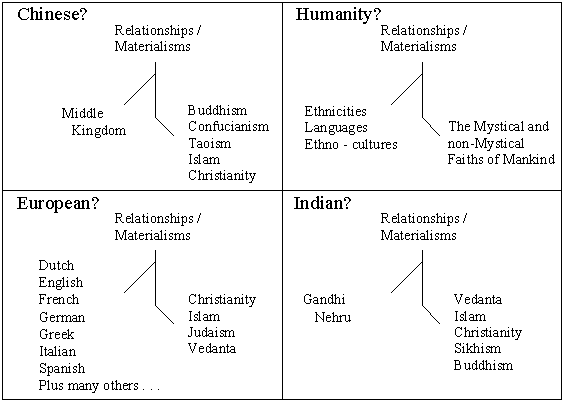 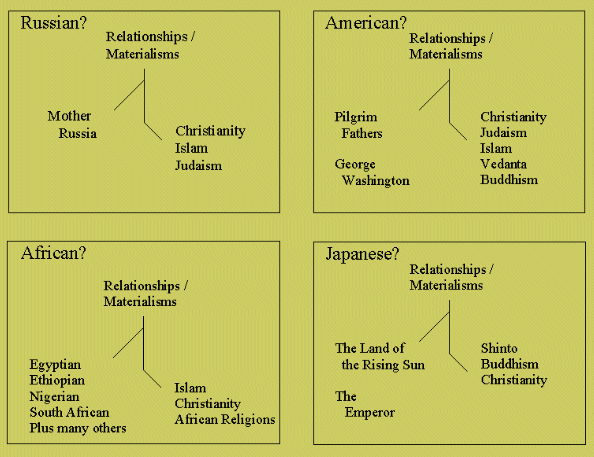
Whilst Age-of-the-Sage page content makes no attempt to address questions of whether the origins of Human Nature are ~ "Natural? or Divine?" ~ our visitors can nevertheless find key insights on our site from such reliable authorities as:- The Great Faiths - Plato - Socrates - Pythagoras - Shakespeare - Emerson that give convincing support to such a "Tripartite" view of Human Nature!!! Believe it or not even SCIENCE seems to acknowledge such "Tripartism"!!! All in all, then, a somewhat astonishing, evidenced, perception! (and one with momentously far-reaching implications) Please don't let on but we have actually placed this on our home page:- 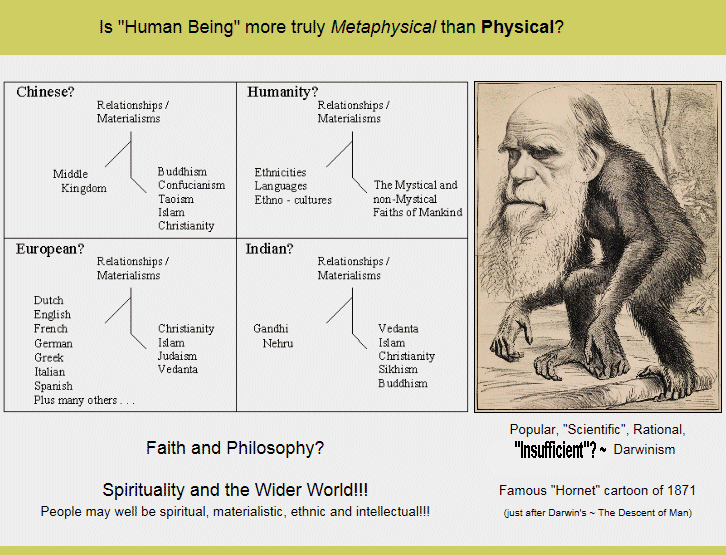 |

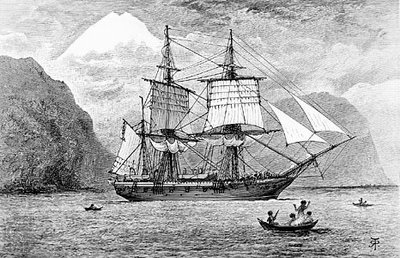 His modest and untrained scientific inclinations were
encouraged by Adam Sedgewick, a geologist and also by a botany
professor, John Stevens Henslow, who was instrumental, despite
heavy paternal opposition, in securing a unpaid place for Darwin
as a naturalist on a long term scientific expedition that was to
be made by HMS Beagle under the command of Captain FitzRoy. In fact he only won parental consent to
his joining the HMS Beagle after his uncle, Josiah Wedgwood II,
spoke on his behalf.
His modest and untrained scientific inclinations were
encouraged by Adam Sedgewick, a geologist and also by a botany
professor, John Stevens Henslow, who was instrumental, despite
heavy paternal opposition, in securing a unpaid place for Darwin
as a naturalist on a long term scientific expedition that was to
be made by HMS Beagle under the command of Captain FitzRoy. In fact he only won parental consent to
his joining the HMS Beagle after his uncle, Josiah Wedgwood II,
spoke on his behalf.
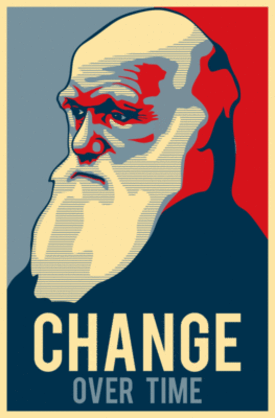 A crucial influence on his outlook on this trip arose out of his being given, by Captain FitzRoy, the first volume of Charles Lyell's book,
Principles of Geology - with the subtitle of "An attempt to explain the former changes
of the Earth's surface by reference to causes now in operation."
A crucial influence on his outlook on this trip arose out of his being given, by Captain FitzRoy, the first volume of Charles Lyell's book,
Principles of Geology - with the subtitle of "An attempt to explain the former changes
of the Earth's surface by reference to causes now in operation."
"I always feel as if my books came half out of Lyell's brains & that I never acknowledge this sufficiently, nor do I know how I can, without saying so in so many words - for I have always thought that the great merit of the Principles, was that it altered the whole tone of one's mind & therefore that when seeing a thing never seen by Lyell, one yet saw it partially through his eyes."When he began his voyage on the HMS Beagle Charles Darwin's intended career in the church had not been explicitly abandoned - English society then accepted that clergymen could take a serious interest in God's Creation through studies in Natural History.
![]()
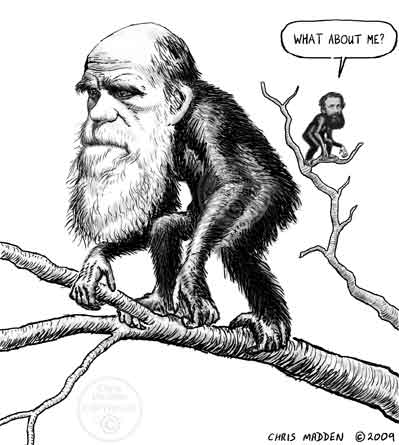 Alfred Russel Wallace (1823-1913) was born near Usk,
Monmouthshire (now part of Gwent), Wales as the eighth child of the family. His father
was employed as librarian in Hertford, an English county town not too far distant from London.
Unfortunately Mr. Wallace lost much of his remaining property through ill advised dealings in
1835 resulting in real hardship for the family - Alfred Russel Wallace, then barely into his teenage years, had
to cut short his formal education late in 1836.
Alfred Russel Wallace (1823-1913) was born near Usk,
Monmouthshire (now part of Gwent), Wales as the eighth child of the family. His father
was employed as librarian in Hertford, an English county town not too far distant from London.
Unfortunately Mr. Wallace lost much of his remaining property through ill advised dealings in
1835 resulting in real hardship for the family - Alfred Russel Wallace, then barely into his teenage years, had
to cut short his formal education late in 1836.
In a letter to Bates dated November 9th, 1845, he concludes by asking, "Have you read 'Vestiges of the Natural History of Creation,' or is it out of your line?" and in the next (dated December 28th), in reply to one from his friend, he continues, "I have a rather more favourable opinion of the 'Vestiges' than you appear to have, I do not consider it a hasty generalisation, but rather an ingenious hypothesis strongly supported by some striking facts and analogies, but which remains to be proved by more facts and the additional light which more research may throw upon the problem.... It furnishes a subject for every observer of nature to attend to; every fact," he observes, "will make either for or against it, and it thus serves both as an incitement to the collection of facts, and an object to which they can be applied when collected. Many eminent writers support the theory of the progressive development of animals and plants. There is a very philosophical work bearing directly on the question - Lawrence's 'Lectures on Man'.... The great object of these 'Lectures' is to illustrate the different races of mankind, and the manner in which they probably originated, and he arrives at the conclusion (as also does Prichard in his work on the 'Physical History of Man') that the varieties of the human race have not been produced by any external causes, but are due to the development of certain distinctive peculiarities in some individuals which have thereafter become propagated through an entire race. Now, I should say that a permanent peculiarity not produced by external causes is a characteristic of 'species' and not of mere 'variety,' and thus, if the theory of the 'Vestiges' is accepted, the Negro, the Red Indian, and the European are distinct species of the genus Homo.Wallace had read Charles Darwin's book about the Voyage of the Beagle and his admiration for the adventures and the observations of natural phenomena that Darwin wrote about as having occured during the Beagle voyage and also those related in a book by William H. Edwards entitled A Voyage Up the River Amazon which came into Wallace's hands resulted in his suggesting to his friend Bates that they set themselves up as professional collectors of Natural History specimens to supply the needs of institutions and gentlemen naturalists. The two young men, they were both in their early twenties, sailed for the mouth of the Amazon in April, 1848. In South America Wallace and Bates worked independently of each other with Wallace travelling and collecting samples in the Amazon basin for several years until, early 1852, ill health led him to decide to return home to England.
"An animal which differs from another by some decided and permanent character, however slight, which difference is undiminished by propagation and unchanged by climate and external circumstances, is universally held to be a distinct species; while one which is not regularly transmitted so as to form a distinct race, but is occasionally reproduced from the parent stock (like albinoes), is generally, if the difference is not very considerable, classed as a variety. But I would class both these as distinct species, and I would only consider those to be varieties whose differences are produced by external causes, and which, therefore, are not propagated as distinct races."
Again, writing to Bates some months later, in 1847: "I begin to feel rather dissatisfied with a mere local collection; little is to be learnt by it. I should like to take some one family to study thoroughly, principally with a view to the theory of the origin of species. By that means I am strongly of opinion that some definite results might be arrived at." And he further alludes to "my favourite subject - the variations, arrangements, distribution, etc., of species."
![]()
Every species has come into existence coincident both in space and time with a pre-existing closely allied species.Shortly thereafter Wallace's paper continues:-
the order in which the several species came into existence, each one having had for its immediate antitype a closely related species existing at the time of its origin. It is evidently possible that two or three distinct species may have had a common antitype, and that each of these may again have become the antitypes from which other closely allied species were created.This paper was read by Sir Charles Lyell who found its contents to suggest strongly that Species were not fixed creations of God, but were in fact naturally mutable.
![]()
![]()
I am perfectly ashamed not to have long since acknowledged your present of the new edition of your Geology, a work which I now read for the third time, and every time with increased interest, as it appears to me one of those productions which work a complete revolution in their subject, by altering entirely the point of view in which it must thenceforward be contemplated. You have succeeded, too, in adding dignity to a subject already grand, by exposing to view the immense extent and complication of the problems it offers for solution, and by unveiling a dim glimpse of a region of speculation connected with it, where it seems impossible to venture without experiencing some degree of that mysterious awe ..."Herschel continued:-
"... Of course I allude to that mystery of mysteries, the replacement of extinct species by others. Many will doubtless think your speculation too bold, but it is as well to face the difficulty at once ...Darwin had earlier been profoundly influenced by reading Herschel's Introduction to the Study of Natural Philosophy during his last year at Cambridge University.
... the origination of fresh species, could it ever come under our cognizance, would be found to be a natural in contradistinction to a miraculous process - although we perceive no indications of any process actually in progress which is likely to issue in such a result."
"During my last year at Cambridge, I read with care and profound interest Humboldt's Personal Narrative. This work, and Sir J. Herschel's Introduction to the Study of Natural Philosophy, stirred up in me a burning zeal to add even the most humble contribution to the noble structure of Natural Science. No one or a dozen other books influenced me nearly so much as these two."Back in England Herschel's letter to Lyell was widely discussed in scientific circles and even appeared in an appendix to Charles Babbage's Ninth Bridgewater Treatise, published in 1837. An entry in Darwin's Notebook E dated 2 December 1838 reads - "Babbage 2d Edit. p. 226 - Herschel calls the appearance of new species the mystery of mysteries, & has grand passage upon the problem.! Hurrah - 'intermediate causes' ".
These birds are closely allied in appearance to the Thenca of Chile (2169) or Callandra of la Plata (1216). In their habits I cannot point out a single difference; - They are lively inquisitive, active run fast, frequent houses to pick the meat of the Tortoise, which is hung up, - sing tolerably well; are said to build a simple open nest. - are very tame, a character in common with the other birds: I imagined however its note or cry was rather different from the Thenca of Chile? - Are very abundant, over the whole Island; are chiefly tempted up into the high & damp parts, by the houses & cleared ground.As early as July 1837 Darwin opened a notebook to record his thoughts as this entry from his personal 'Journal', which he kept between 1809-1881, relates:-
I have specimens from four of the larger Islands; the two above enumerated, and (3349: female. Albermarle Isd.) & (3350: male: James Isd). - The specimens from Chatham & Albermarle Isd appear to be the same; but the other two are different. In each Isld. each kind is exclusively found: habits of all are indistinguishable. When I recollect, the fact that the form of the body, shape of scales & general size, the Spaniards can at once pronounce, from which Island any Tortoise may have been brought. When I see these Islands in sight of each other, & [the word "but" deleted here] possessed of but a scanty stock of animals, tenanted by these birds, but slightly differing in structure & filling the same place in Nature, I must suspect they are only varieties.
The only fact of a similar kind of which I am aware, is the constant | asserted difference - between the wolf-like Fox of East & West Falkland Islds.
If there is the slightest foundation for these remarks the zoology of Archipelagoes - will be well worth examining; for such facts [the word would inserted here] undermine the stability of Species.
'In July opened first note Book on "transmutation of Species". - Had been greatly struck from about month of previous March on character of S. American fossils - & species on Galapagos Archipelago. - These facts origin (especially latter) of all my views.'The direction of Darwin's thoughts can perhaps be illustrated by this famous sketch:-
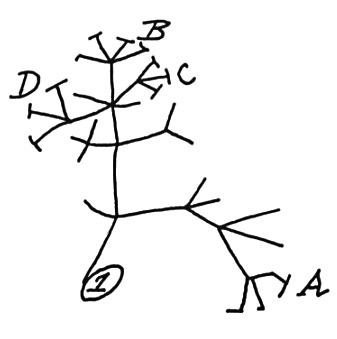
On the other hand swiftness of wing has been acquired by hawks and swallows to pursue their prey; and a proboscis of admirable structure has been acquired by the bee, the moth, and the humming bird, for the purpose of plundering the nectaries of flowers. All which seem to have been formed by the original living filament, excited into action by the necessities of the creatures, which possess them, and on which their existence depends.Erasmus Darwin's idea of heritable evolutionary change being that a potentially rapid one driven by the "necessities of the creatures" where new parts and new propensities were open to being acquired - after birth - in line with such necessities in accordance with an unexplained "power of acquiring new parts".:-
From thus meditating on the great similarity of the structure of the warm-blooded animals, and at the same time of the great changes they undergo both before and after their nativity; and by considering in how minute a portion of time many of the changes of animals above described have been produced; would it be too bold to imagine, that in the great length of time, since the earth began to exist, perhaps millions of ages before the commencement of the history of mankind, would it be too bold to imagine, that all warm-blooded animals have arisen from one living filament, which THE GREAT FIRST CAUSE endued with animality, with the power of acquiring new parts, attended with new propensities, directed by irritations, sensations, volitions, and associations; and thus possessing the faculty of continuing to improve by its own inherent activity, and of delivering down those improvements by generation to its posterity, world without end!
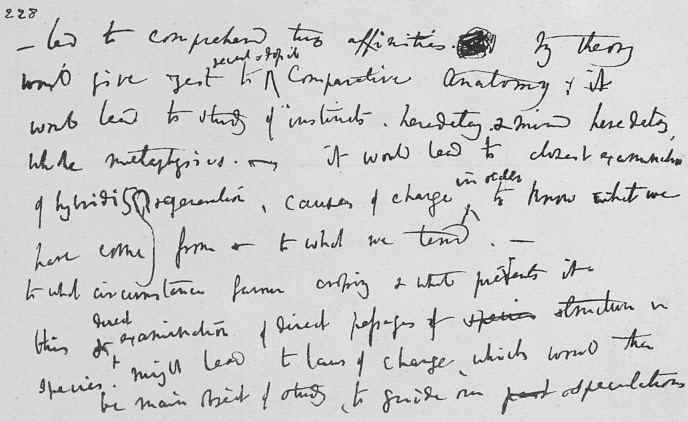
![]()
"..After my return to England it appeared to me that by following the example of Lyell in Geology, and by collecting all facts which bore in any way on the variation of animals and plants under domestication and nature, some light might perhaps be thrown on the whole subject. My first note-book was opened in July 1837. I worked on true Baconian principles, and without any theory collected facts on a wholesale scale, more especially with respect to domesticated productions, by printed enquiries, by conversation with skilful breeders and gardeners, and by extensive reading. When I see the list of books of all kinds which I read and abstracted, including whole series of Journals and Transactions, I am surprised at my industry. I soon perceived that selection was the keystone of man's success in making useful races of animals and plants. But how selection could be applied to organisms living in a state of nature remained for some time a mystery to me.And why was Charles Darwin so excited?
Fifteen months after I had begun my systematic enquiry, I happened to read for amusement Malthus on Population, and being well prepared to appreciate the struggle for existence which everywhere goes on from long-continued observation of the habits of animals and plants, it at once struck me that under these circumstances favourable variations would tend to be preserved, and unfavourable ones to be destroyed. The result of this would be the formation of a new species.
Here, then, I had at last got a theory by which to work; but I was so anxious to avoid prejudice, that I determined not for some time to write even the briefest sketch of it."
In his Essay on the Principle of Population Thomas Malthus had suggested that:-Darwin took up Malthus' "imperious and all-pervading law of nature" as providing a mechanism whereby individuals within a species which, because of some very slight variation, were better suited in win out in the "struggle for survival" by being more able to gain the food necessary to allow them to survive in the short term, and to allow them to become the parents of a new generation - which could thereby tend inherit this favourable very slight variation - in the longer term.
"... Through the animal and vegetable kingdoms nature has scattered the seeds of life abroad with the most profuse and liberal hand. She has been comparatively sparing in the room and the nourishment necessary to rear them. The germs of existence contained in this spot of earth, with ample food, and ample room to expand in, would fill millions of worlds in a few thousand years. Necessity, that imperious and all-pervading law of nature, restrains them within the prescribed bounds. The race of plants and the race of animals shrink under this great restrictive law ..."
May not the habit in scientific pursuits of believing nothing till it is proved, influence your mind too much in other things which cannot be proved in the same way, and which if true are likely to be above our comprehension ...Darwin had grown up in and, despite his own skepticism after returning from his voyages, continued to live in a society that generally accepted biblical explanations of creation whereby the Earth and all of its unchanging, immutable, life forms were, as they were and as they ever had been, as a result of Original Acts of Divine Creation.
I have been now ever since my return engaged in a very presumptuous work & which I know no one individual who wd not say a very foolish one.- I was so struck with distribution of Galapagos organisms &c &c & with the character of the American fossil mammifers, &c &c that I determined to collect blindly every sort of fact, which cd bear any way on what are species. - I have read heaps of agricultural & horticultural books, & have never ceased collecting facts - At last gleams of light have come, & I am almost convinced (quite contrary to opinion I started with) that species are not (it is like confessing a murder) immutable. Heaven forfend me from Lamarck nonsense of a "tendency to progression" "adaptations from the slow willing of animals" &c, - but the conclusions I am led to are not widely different from his - though the means of change are wholly so - I think I have found out (here's presumption!) the simple way by which species become exquisitely adapted to various ends.- You will now groan, & think to yourself 'on what a man have I been wasting my time in writing to.' - I shd, five years ago, have thought so.-During 1844, Darwin, with Emma's editorial advice and participation, extended an initial thirty-five page abstract of his theory written in pencil in 1842 by preparing a two hundred and thirty page-long overview of his theory for publication. He also framed, in July 1844, an accompanying letter to his wife urging as to how she was to seek the aid of friends to that end and asking her to regard a then substantial sum as being set aside to fund the project:-
I have just finished my sketch of my species theory. If as I believe that my theory is true & if it be accepted even by one competent judge, it will be a considerable step in science. I therefore write this, in case of my sudden death, as my most solemn & last request, which I am sure you will consider the same as if legally entered in my will, that you will devote 400£ to its publication & further will yourself, or through Hensleigh [Wedgwood], take trouble in promoting it.It should not be over-looked that although Darwin was then only some thirty-five years old he had had many bouts of serious illness since returning home from his Beagle voyage. It is thought he may have picked up an intermittently seriously debilitating condition known as Chagas Fever during those years of travel and exploration in far-flung places.
![]()
The sketch of 1842 is written on bad paper with a soft pencil, and is in many parts extremely difficult to read, many of the words ending in mere scrawls and being illegible without context. It is evidently written rapidly, and is in his most elliptical style, the articles being frequently omitted, and the sentences being loosely composed and often illogical in structure. There is much erasure and correction, apparently made at the moment of writing, and the MS. does not give the impression of having been re-read with any care. The whole is more like hasty memoranda of what was clear to himself, than material for the convincing of others.The pencil sketch of 1842 is recorded, by Francis Darwin, as being open to being laid under a series of sectional headings.
The sections into which the Essay of 1842 is divided are in the original merely indicated by a gap in the MS. or by a line drawn across the page. No titles are given except in the case of § VIII.; and § II. is the only section which has a number in the original. I might equally well have made sections of what are now subsections, e.g. Natural Selection p. 7, or Extermination p. 28. But since the present sketch is the germ of the Essay of 1844, it seemed best to preserve the identity between the two works, by using such of the author's divisions as correspond to the chapters of the enlarged version of 1844. The geological discussion with which Part II begins corresponds to two chapters (IV and V) of the 1844 Essay. I have therefore described it as §§ IV. and V., although I cannot make sure of its having originally consisted of two sections. With this exception the ten sections of the Essay of 1842 correspond to the ten chapters of that of 1844.Francis Darwin then lays out the pencil sketch of 1842 thusly:-
CONTENTS
ESSAY OF 1842
PAGES
PART I
§ i. On variation under domestication, and on the principles of selection ........ 1
§ ii. On variation in a state of nature and on the natural means of selection ....... 4
§ iii. On variation in instincts and other mental attributes . 17
PART II
§§ iv. and v. On the evidence from Geology. (The reasons for combining the two sections are given in the Introduction) ......... 22
§ vi. Geographical distribution ...... 29
§ vii. Affinities and classification ...... 35
§ viii. Unity of type in the great classes .... 38
§ ix. Abortive organs ........ 45
§ x. Recapitulation and conclusion ..... 48
![]()
|
| |
The sketch of 1844 is written in a clerk's hand, in two hundred and thirty-one pages folio, blank leaves being alternated with the MS. with a view to amplification. The text has been revised and corrected, criticisms being pencilled by himself on the margin. It is divided into two parts: I. "On the variation of Organic Beings under Domestication and in their Natural State." II. "On the Evidence favourable and opposed to the view that Species are naturally formed races descended from common Stocks." The first part contains the main argument of the 'Origin of Species.' It is founded, as is the argument of that work, on the study of domestic animals, and both the Sketch and the 'Origin' open with a chapter on variation under domestication and on artificial selection. This is followed, in both essays, by discussions on variation under nature, on natural selection, and on the struggle for life. Here, any close resemblance between the two essays with regard to arrangement ceases. Chapter III. of the Sketch, which concludes the first part, treats of the variations which occur in the instincts and habits of animals, and thus corresponds to some extent with Chapter VII. of the 'Origin' (1st edit.). It thus forms a complement to the chapters which deal with variation in structure. It seems to have been placed thus early in the Essay to prevent the hasty rejection of the whole theory by a reader to whom the idea of natural selection acting on instincts might seem impossible. This is the more probable, as the Chapter on Instinct in the 'Origin' is specially mentioned (Introduction, p. 5) as one of the "most apparent and gravest difficulties on the theory." Moreover the chapter in the Sketch ends with a discussion, "whether any particular corporeal structures ... are so wonderful as to justify the rejection primæ facie of our theory." Under this heading comes the discussion of the eye, which in the 'Origin' finds its place in Chapter VI. under "Difficulties on Theory." ...
![]()
many forms are altogether gone, while of others we have now only kindred species. Thus to find not only frequent additions to the previous existing forms, but frequent withdrawals of forms which had apparently become inappropriate - a constant shifting as well as advance - is a fact calculated very forcibly to arrest attention. A candid consideration of all these circumstances can scarcely fail to introduce into our minds a somewhat different idea of organic creation from what has hitherto been generally entertained. (page 152)The "Vestiges of the Natural History of Creation" seemed to offer an explanation of things hitherto inexplicable but from several points of view gave cause of outrage to traditional religious opinion.
To a reasonable mind the Divine attributes must appear, not diminished or reduced in some way, by supposing a creation by law, but infinitely exalted. It is the narrowest of all views of the Deity, and characteristic of a humble class of intellects, to suppose him acting constantly in particular ways for particular occasions. It, for one thing, greatly detracts from his foresight, the most undeniable of all the attributes of Omnipotence. It lowers him towards the level of our own humble intellects. Much more worthy of him it surely is, to suppose that all things have been commissioned by him from the first, though neither is he absent from a particle of the current of natural affairs in one sense, seeing that the whole system is continually supported by his providence (pp.156-157).
Vestiges "comes before [its readers] with a bright, polished, and many-coloured surface, and the serpent coils a false philosophy, and asks them to stretch out their hands and pluck the forbidden fruit,"In October 1845 Charles Darwin wrote to his friend Sir Charles Lyell and made some mention of Sedgwick's Review of Vestiges:-
...I have been much interested with Sedgwick Review; though I find it is far from popular with non-scientific readers. I think some few passages savour of the dogmatism of the pulpit, rather than of the philosphy of the Professor chair; & some of the wit strikes me as only worthy of Broderip in the Quarterly. Nevertheless it a grand piece of argument against mutability of species; & I read it with fear & trembling, but was well pleased to find, that I had not overlooked any of the arguments, though I had put them to myself as feebly as milk & water.Even though he went to the trouble of gathering his thoughts so as to prepare a manuscript overview of his theorising, Darwin actually preferred to keep his potentially most controversial ideas a private matter because of his reluctance to meet an expected adverse reaction from family, friends, and the wider public by airing controversial views. He may have been particularly reluctant to cause distress to Emma, his sincerely christian wife.
![]()
...We had much to me most interesting conversation, when he (i.e. Woolaston) & the others were here: Wollaston strikes me as quite a first-rate man & very nice & pleasant into the bargain. It is really striking (but almost laughable to me) to notice the change in Hookers & Huxley's opinions on species during the last few years. -The manner in which Darwin presumed, on this occasion, to nominate his own visiting time, and the warm farewell to a "dear old Patron" does much to show the closeness of the friendship between the two men.
With respect to your suggestion of a sketch of my view; I hardly know what to think, but will reflect on it; but it goes against my prejudices. To give a fair sketch would be absolutely impossible, for every proposition requires such an array of facts. If I were to do anything it could only refer to the main agency of change, selection, - & perhaps point out a very few of the leading features which countenance such a view, & some few of the main difficulties. But I do not know what to think: I rather hate the idea of writing for priority, yet I certainly shd. be vexed if any one were to publish my doctrines before me. - Anyhow I thank you heartily for your sympathy. I shall be in London next week, & I will call on you on Thursday morning for one hour precisely so as not to lose much of your time & my own: but will you let me this one time come as early as 9 oclock, for I have much which I must do, & the morning is my strongest time.
Farewell,
My dear old Patron,
Yours,
C. Darwin
My dear SirIt was in 1858 whilst he was laid up with a malarial fever at Ternate, in the Celebes Islands, that a possible solution to the method of evolution flashed into form in Wallace's mind. The outcome being that this burst of inspiration together with his more longstanding ruminations resulted in Alfred Russel Wallace independently framing a theory of the evolutionary origin of species by natural selection.
I am much obliged for your letter of Oct. 10th. from Celebes received a few days ago: in a laborious undertaking sympathy is a valuable & real encouragement. By your letter & even still more by your paper in Annals, a year or more ago, I can plainly see that we have thought much alike & to a certain extent have come to similar conclusions. In regard to the Paper in Annals, I agree to the truth of almost every word of your paper; & I daresay that you will agree with me that it is very rare to find oneself agreeing pretty closely with any theoretical paper; for it is lamentable how each man draws his own different conclusions from the very same fact. -
This summer will make the 20th year (!) since I opened my first-note-book, on the question how & in what way do species & varieties differ from each other. - I am now preparing my work for publication, but I find the subject so very large, that though I have written many chapters, I do not suppose I shall go to press for two years. -
From a letter by Charles Darwin to Alfred Russel Wallace dated May 1 1857
It was while waiting at Ternate in order to get ready for my next journey, and to decide where I should go, that the idea already referred to occurred to me. It has been shown how, for the preceding eight or nine years, the great problem of the origin of the species had been continually pondered over, and how my varied observations and study had been made use of to lay the foundation for its full discussion and elucidation. My paper written at Sarawak rendered it certain to my mind that the change had taken place by natural succession and descent - one species becoming changed either slowly or rapidly into another. But the exact process of the change and the causes which led to it were absolutely unknown and appeared almost inconceivable. The great difficulty was to understand how, if one species was gradually changed into another, there continued to be so many quite distinct species, so many which differed from their nearest allies by slight yet perfectly definite and constant characters. One would expect that if it was a law of nature that species were continually changing so as to become in time new and distinct species, the world would be full of an inextricable mixture of various slightly different forms, so that the well-defined and constant species we see would not exist. Again, not only are species, as a rule, separated from each other by distinct external characters, but they almost always differ also to some degree in their food, in the places they frequent, in their habits and instincts, all these characters are quite as definite and constant as are the external characters. The problem then was, not only how and why do species change, but how and why do they change into new and well-defined species, distinguished from each other in so many ways; why and how do they become so exactly adapted to distinct modes of life; and why do all the intermediate grades die out (as geology shows they have died out) and leave only clearly defined and well-marked species, genera, and higher groups of animals.from Alfred Russel Wallace : My Life, pp. 360-363.
Now, the new idea or principle which Darwin had arrived at twenty years before, and which occurred to me at this time, answers all these questions and solves all these difficulties, and it is because it does so, and also because it is in itself self-evident and absolutely certain, that it has been accepted by the whole scientific world as affording a true solution of the great problem of the origin of the species.
At the time in question I was suffering from a sharp attack of intermittent fever, and every day during the cold and succeeding hot fits had to lie down for several hours, during which time I had nothing to do but to think over any subjects then particularly interesting me. One day something brought to my recollection Malthus's "Principles of Population", which I had read about twelve years before. I thought of his clear exposition of "the positive checks to increase" - disease, accidents, war, and famine - which keep down the population of savage races to so much lower an average than that of more civilized peoples. It then occurred to me that these causes or their equivalents are continually acting in the case of animals also; and as animals usually breed much more rapidly than does mankind, the destruction every year from these causes must be enormous in order to keep down the numbers of each species, since they evidently do not increase regularly from year to year, as otherwise the world would long ago have been densely crowded with those that breed most quickly. Vaguely thinking over the enormous and constant destruction which this implied, it occurred to me to ask the question, Why do some die and some live? And the answer was clearly, that on the whole the best fitted live. From the effects of disease the most healthy escaped; from enemies, the strongest, the swiftest, or the most cunning; from famine, the best hunters or those with the best digestion; and so on. Then it suddenly flashed upon me that this self-acting process would necessarily improve the race, because in every generation the inferior would inevitably be killed off and the superior would remain - that is, the fittest would survive. Then at once I seemed to see the whole effect of this, that when changes of land and sea, or of climate, or of food-supply, or of enemies occurred - and we know that such changes have always been taking place - and considering the amount of individual variation that my experience as a collector had shown me to exist, then it followed that all the changes necessary for the adaptation of the species to the changing conditions would be brought about; and as great changes in the environment are always slow, there would be ample time for the change to be effected by the survival of the best fitted in every generation. In this way every part of an animal's organization could be modified exactly as required, and in the very process of this modification the unmodified would die out, and thus the definite characters and the clear isolation of each new species would be explained. The more I thought over it the more I became convinced that I had at length found the long-sought-for law of nature that solved the problem of the origin of the species. For the next hour I thought over the deficiencies in the theories of Lamarck and of the author of the "Vestiges," and I saw that my new theory supplemented these views and obviated every important difficulty. I waited anxiously for the termination of my fit so that I might at once make notes for a paper on the subject. The same evening I did this pretty fully, and on the two succeeding evenings wrote it out carefully in order to send it to Darwin by the next post, which would leave in a day or two.
I wrote a letter to him in which I said I hoped the idea would be as new to him as it was to me, and that it would supply the missing factor to explain the origin of the species. I asked him if he thought it sufficiently important to show it to Sir Charles Lyell, who had thought so highly of my former paper.
My dear LyellAlthough Darwin had shown himself reluctant to publish his theorising in the past he was now faced with the possibility that his own labours and insights might be overshadowed with much of any associated credit being won by Alfred Russel Wallace upon the publication of his sketch in some scientific journal or other - how was he now to act - he would doubtless have felt it strictly necessary to behave in a gentlemanly fashion and, as such, would have been conscious of the necessity of giving Wallace due credit.
Some year or so ago, you recommended me to read a paper by Wallace in the Annals, which had interested you & as I was writing to him, I knew this would please him much, so I told him. He has to day sent me the enclosed & asked me to forward it to you. It seems to me well worth reading. Your words have come true with a vengeance that I shd. be forestalled. You said this when I explained to you here very briefly my views of "Natural Selection" depending on the Struggle for existence. - I never saw a more striking coincidence. If Wallace had my manuscript sketch written out in 1842 he could not have made a better short abstract! Even his terms now stand as Heads of my Chapters.
Please return me the manuscript which he does not say he wishes me to publish; but I shall of course at once write & offer to send to any Journal. So all my originality, whatever it may amount to, will be smashed. Though my Book, if it will ever have any value, will not be deteriorated; as all the labour consists in the application of the theory.
I hope you will approve of Wallace's sketch, that I may tell him what you say.
As I had not intended to publish my sketch, can I do so honourably, because Wallace has sent me an outline of his doctrine? I would far rather burn my whole book than that he or any other man should think that I behaved in a paltry spirit. Do you not think that that his having sent me this sketch ties my hands? I do not in least believe that that he originated his views from anything which I wrote to him.In the event, Darwin, in consultation with Sir Charles Lyell and Sir Joseph Hooker, agreed that there should be a public joint presentation of the potentially dramatically controversial views that he, and Wallace, had independently developed.
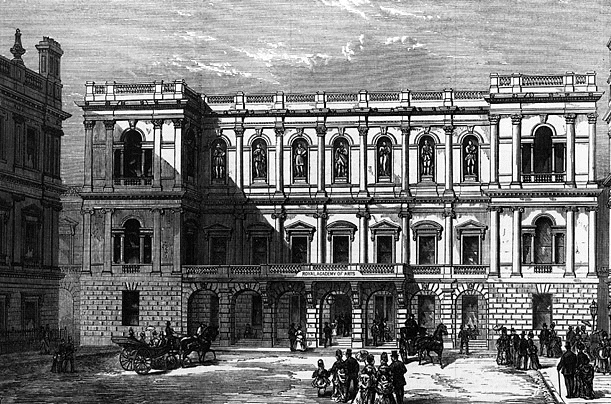
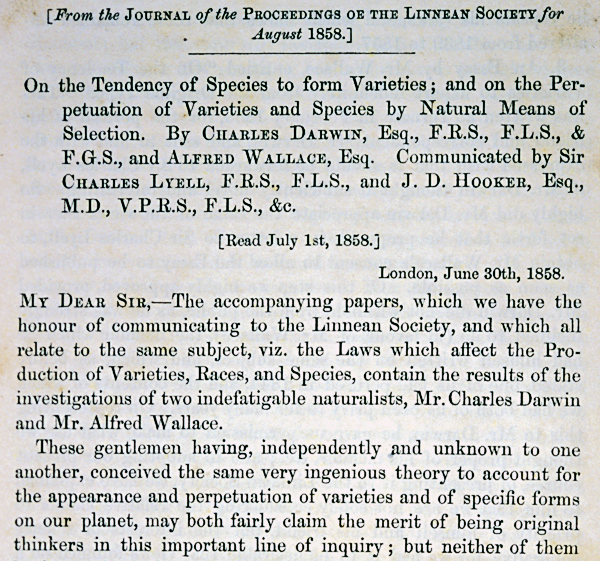
On July 1, 1858, a joint paper by Wallace and Darwin was read to a meeting
of the Linnean Society of London held at Burlington House, above.
The circumstances under which I consented at the request of Lyell and Hooker to allow of an abstract from my MS., together with a letter to Asa Gray, dated September 5, 1857, to be published at the same time with Wallace's Essay, are given in the 'Journal of the Proceedings of the Linnean Society,' 1858, page 45. I was at first very unwilling to consent, as I thought Mr. Wallace might consider my doing so unjustifiable, for I did not then know how generous and noble was his disposition. The extract from my MS. and the letter to Asa Gray had neither been intended for publication, and were badly written. Mr. Wallace's essay, on the other hand, was admirably expressed and quite clear. Nevertheless, our joint productions excited very little attention, and the only published notice of them which I can remember was by Professor Haughton of Dublin, whose verdict was that all that was new in them was false, and what was true was old. This shows how necessary it is that any new view should be explained at considerable length in order to arouse public attention.Also in 1887 Hooker provided a recollection of the meeting to Charles Darwin's son Francis Darwin:
The interest excited was intense, but the subject was too novel and too ominous for the old school to enter the lists, before armouring. After the meeting it was talked over with bated breath: Lyell's approval, and perhaps in a small way mine, as his lieutenant in the affair, rather overawed the Fellows, who would otherwise have flown out against the doctrine. We had, too, the vantage ground of being familiar with the authors and their theme.Wallace was several weeks letter-delivery time away in the Moluccas and efforts were made by Darwin, Lyell and Hooker to keep him informed of developments in London in relation to his sending his manuscript to Charles Darwin.
My dear Sir,Following on from Wallace's initial approach Darwin, besides preparing a paper that was read to the Linnean Society, made efforts to draw together what he himself later referred to as an "abstract" out from his extensive research notes into a work of sufficient authority and completeness for publication.
I beg leave to acknowledge the receipt of your letter of July last, sent me by Mr. Darwin, & informing me of the steps you had taken with reference to a paper I had communicated to that gentleman. Allow me in the first place sincerely to thank yourself & Sir Charles Lyell for your kind offices on this occasion, & to assure you of the gratification afforded me both by the course you have pursued, & the favourable opinions of my essay which you have so kindly expressed. I cannot but consider myself a favoured party in this matter, because it has hitherto been too much the practice in cases of this sort to impute all the merit to the first discoverer of a new fact or new theory, & little or none to any other party who may, quite independently, have arrived at the same result a few years or a few hours later.
I also look upon it as a most fortunate circumstance that I had a short time ago commenced a correspondence with Mr. Darwin on the subject of "Varieties," since it has led to the earlier publication of a portion of his researches & has secured to him a claim of priority which an independent publication either by myself or some other party might have injuriously effected; - for it is evident that the time has now arrived when these and similar views will be promulgated & must be fairly discussed.
It would have caused me much pain & regret had Mr. Darwin's excess of generosity led him to make public my paper unaccompanied by his own much earlier & I doubt not much more complete views on the same subject, & I must again thank you for the course you have adopted, which while strictly just to both parties, is so favourable to myself.
In September 1858 I set to work by the strong advice of Lyell and Hooker to prepare a volume on the transmutation of species, but was often interrupted by ill-health, and short visits to Dr. Lane's delightful hydropathic establishment at Moor Park. I abstracted the MS. begun on a much larger scale in 1856, and completed the volume on the same reduced scale. It cost me thirteen months and ten days' hard labour. It was published under the title of the 'Origin of Species,' in November 1859. Though considerably added to and corrected in the later editions, it has remained substantially the same book.
It is no doubt the chief work of my life. It was from the first highly successful. The first small edition of 1250 copies was sold on the day of publication, and a second edition of 3000 copies soon afterwards. Sixteen thousand copies have now (1876) been sold in England; and considering how stiff a book it is, this is a large sale. It has been translated into almost every European tongue, even into such languages as Spanish, Bohemian, Polish, and Russian. It has also, according to Miss Bird, been translated into Japanese* (*Miss Bird is mistaken, as I learn from Prof. Mitsukuri.-F.D.), and is there much studied. Even an essay in Hebrew has appeared on it, showing that the theory is contained in the Old Testament! The reviews were very numerous; for some time I collected all that appeared on the 'Origin' and on my related books, and these amount (excluding newspaper reviews) to 265; but after a time I gave up the attempt in despair. Many separate essays and books on the subject have appeared; and in Germany a catalogue or bibliography on "Darwinismus" has appeared every year or two.
The success of the 'Origin' may, I think, be attributed in large part to my having long before written two condensed sketches, and to my having finally abstracted a much larger manuscript, which was itself an abstract. By this means I was enabled to select the more striking facts and conclusions.
![]()
More than twenty-five centuries have passed since that which has been called the Perennial Philosophy was first committed to writing; and in the course of those centuries it has found expression, now partial, now complete, now in this form, now in that, again and again...
...the Perennial Philosophy has spoken almost all the languages of Asia and Europe and has made use of the terminology and traditions of every one of the higher religions. But under all this confusion of tongues and myths, of local histories and particularist doctrines, there remains a Highest Common Factor, which is the Perennial Philosophy in what may be called its chemically pure state...
The Wisdoms and Insights available on our
site include some about Human Existence itself:-

Surely even non-religious persons would be positive about the probability
that Human Being is more truly metaphysical than physical!
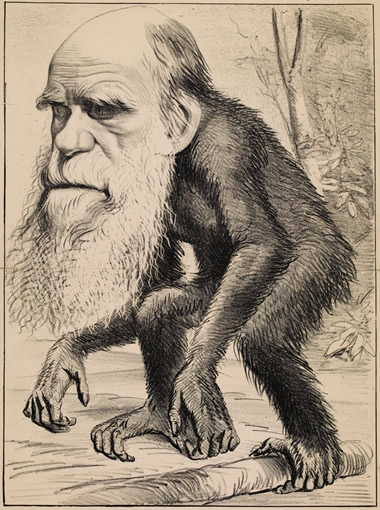
Famous 'The Hornet' caricature of 1871
|
Start of
Theory of Evolution development
History of Evolutionary Theory
Charles Darwin - Alfred Russel Wallace - Thomas Malthus